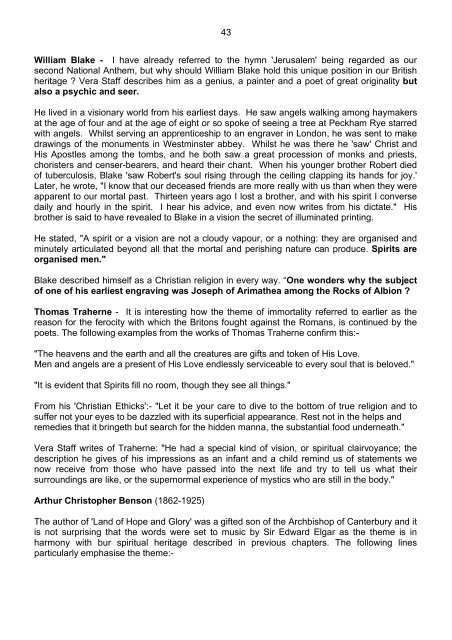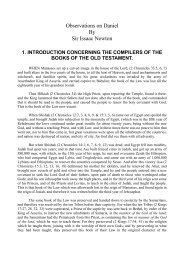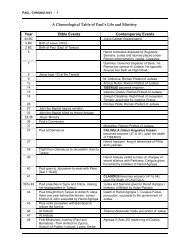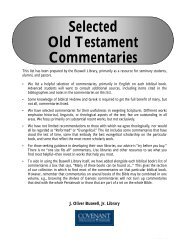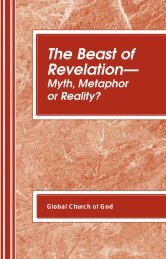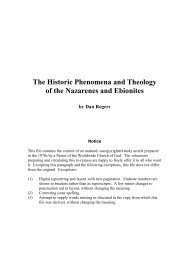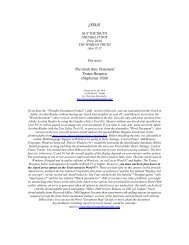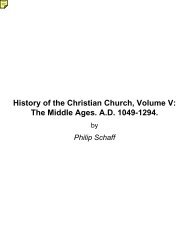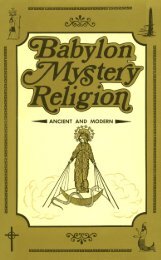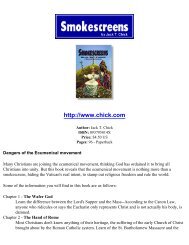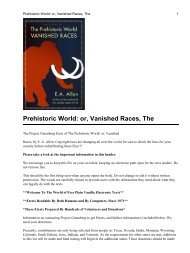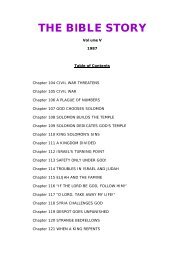by Percy E. Corbett - friendsofsabbath.org
by Percy E. Corbett - friendsofsabbath.org
by Percy E. Corbett - friendsofsabbath.org
Create successful ePaper yourself
Turn your PDF publications into a flip-book with our unique Google optimized e-Paper software.
43<br />
William Blake - I have already referred to the hymn 'Jerusalem' being regarded as our<br />
second National Anthem, but why should William Blake hold this unique position in our British<br />
heritage ? Vera Staff describes him as a genius, a painter and a poet of great originality but<br />
also a psychic and seer.<br />
He lived in a visionary world from his earliest days. He saw angels walking among haymakers<br />
at the age of four and at the age of eight or so spoke of seeing a tree at Peckham Rye starred<br />
with angels. Whilst serving an apprenticeship to an engraver in London, he was sent to make<br />
drawings of the monuments in Westminster abbey. Whilst he was there he 'saw' Christ and<br />
His Apostles among the tombs, and he both saw a great procession of monks and priests,<br />
choristers and censer-bearers, and heard their chant. When his younger brother Robert died<br />
of tuberculosis, Blake 'saw Robert's soul rising through the ceiling clapping its hands for joy.'<br />
Later, he wrote, "I know that our deceased friends are more really with us than when they were<br />
apparent to our mortal past. Thirteen years ago I lost a brother, and with his spirit I converse<br />
daily and hourly in the spirit. I hear his advice, and even now writes from his dictate." His<br />
brother is said to have revealed to Blake in a vision the secret of illuminated printing.<br />
He stated, "A spirit or a vision are not a cloudy vapour, or a nothing: they are <strong>org</strong>anised and<br />
minutely articulated beyond all that the mortal and perishing nature can produce. Spirits are<br />
<strong>org</strong>anised men."<br />
Blake described himself as a Christian religion in every way. “One wonders why the subject<br />
of one of his earliest engraving was Joseph of Arimathea among the Rocks of Albion ?<br />
Thomas Traherne - It is interesting how the theme of immortality referred to earlier as the<br />
reason for the ferocity with which the Britons fought against the Romans, is continued <strong>by</strong> the<br />
poets. The following examples from the works of Thomas Traherne confirm this:-<br />
"The heavens and the earth and all the creatures are gifts and token of His Love.<br />
Men and angels are a present of His Love endlessly serviceable to every soul that is beloved."<br />
"It is evident that Spirits fill no room, though they see all things."<br />
From his 'Christian Ethicks':- "Let it be your care to dive to the bottom of true religion and to<br />
suffer not your eyes to be dazzled with its superficial appearance. Rest not in the helps and<br />
remedies that it bringeth but search for the hidden manna, the substantial food underneath."<br />
Vera Staff writes of Traherne: "He had a special kind of vision, or spiritual clairvoyance; the<br />
description he gives of his impressions as an infant and a child remind us of statements we<br />
now receive from those who have passed into the next life and try to tell us what their<br />
surroundings are like, or the supernormal experience of mystics who are still in the body."<br />
Arthur Christopher Benson (1862-1925)<br />
The author of 'Land of Hope and Glory' was a gifted son of the Archbishop of Canterbury and it<br />
is not surprising that the words were set to music <strong>by</strong> Sir Edward Elgar as the theme is in<br />
harmony with bur spiritual heritage described in previous chapters. The following lines<br />
particularly emphasise the theme:-


